Chinese government controlled media continuously keeps telling the world about China’s fast emerging aircraft industry. It is also to raise the morale of its own people and to give the impression of becoming a great military power. But great powers do not steal designs or unauthorisedly copy them flouting all intellectual property rights and norms evolved by the responsible world. Practically all aircraft in People’s Liberation Army Air Force (PLAAF) are, either foreign made, or unathorised reverse engineered copies. Stealing foreign military technology has now become a regular habit and a strategic weakness. In this manner China skips expensive and time-consuming R&D. This is not how one becomes a respected superpower. Time to have a look at each aircraft design.
Initial Aircraft Copies
The PLAAF fought the Korean War in Soviet-built Mikoyan MiG -15s, known as the J-2 in Chinese service, with training from Soviet instructors. The war also brought Soviet assistance for the indigenous aircraft industry. The Shenyang Aircraft Corporation built the two-seat MiG-15UTI trainer as the JJ-2, and during the war manufactured various components to maintain the Soviet-built fighters. By 1956 the People’s Republic was assembling copies of MiG-15s, and eight years later was producing both the Shenyang J-5 (MiG-17) and the Shenyang J-6 (MiG-19) under license. The 1960s were a difficult time for the PLAAF. The withdrawal of Soviet aid due to the Sino-Soviet split, and the prioritization of the missile and nuclear weapons programs crippled the industry, which markedly declined through 1963. A recovery began around 1965 as J-2s, J-5s, and some J-6s were provided to North Vietnam during the Vietnam War. Development of the Shenyang J-8, China’s first indigenous fighter, was also initiated during the 1960s.

The Shenyang F-7B/Chengdu J-7 (Copy of MiG 21)
In the 1950s and early 1960s, the Soviet Union shared most of its conventional weapons technology with China. The MiG 21 was a contender. However, the Sino-Soviet split abruptly ended the initial cooperation, and by September 1, 1960, the Soviets withdrew their advisers, resulting in the project being stopped in China. Later Soviet Premier Khrushchev unexpectedly wrote to Mao Zedong in February 1962, offering to transfer MiG-21 technology. The Chinese viewed this offer as a Soviet gesture to make peace, but were suspicious. A delegation headed by the commander-in-chief of the People’s Liberation Army Air Force (PLAAF), himself a Soviet military academy graduate, went to Moscow. The technology transfer deal was signed. Several MiG-21s were sent to China, flown by Soviet pilots, and China also received some MiG-21Fs in kits, along with parts and technical documents. However, Chinese discovered at Shenyang aircraft factory that the technical documents provided by the Soviets were incomplete and that some of the parts could not be used. China then disassembled a few MiG 21s and began reverse-engineering the aircraft for local production. They claim to have found and solved 249 major problems and reproduced eight major technical documents that were not provided by the Soviet Union. The F-7s were the very last production MiG-21s, and about 2,400 were manufactured, some as recently as 2013.
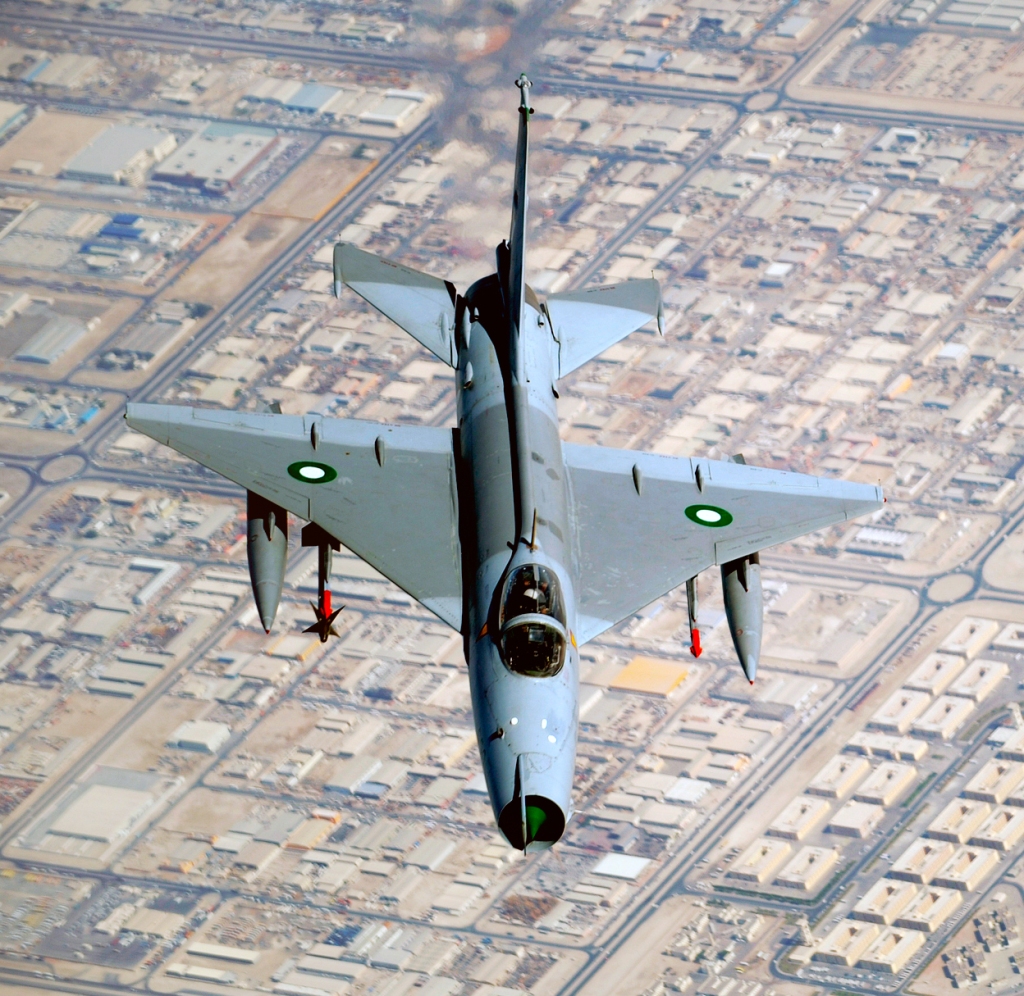
J-8 (Copy of MiG 21 and Su-15 combine)
The Chinese effort to develop their own an all-weather interceptor began in full in 1964 and this produced the first Chinese-designed and built jet fighter to combat new, high altitude threats including the Lockheed U-2 spy plane. In 1964 the PLAAF asked for a fighter/interceptor to counter bombers and spy planes as the newly introduced Chengdu J-7, they felt was incapable of doing so. The prototype took its maiden flight in 1969. Despite the mid-1960s origins of the J-8, due to the political turmoil of the Cultural Revolution, the J-8 was not produced until 1979 and entered service in 1980. Its basic configuration resembles an enlargement of the delta-winged J-7, and had two Liyang (LMC) Wopen-7A turbojet engines, and could fly to Mach 2.2. It was clearly derived from the MiG 21 design. The subsequent variants J-8II had the side air intake copied from the MiG 23 or American F-4 Phantom. In fact it was more a copy of the Sukhoi Su-15. At one point nearly 300 were in service.

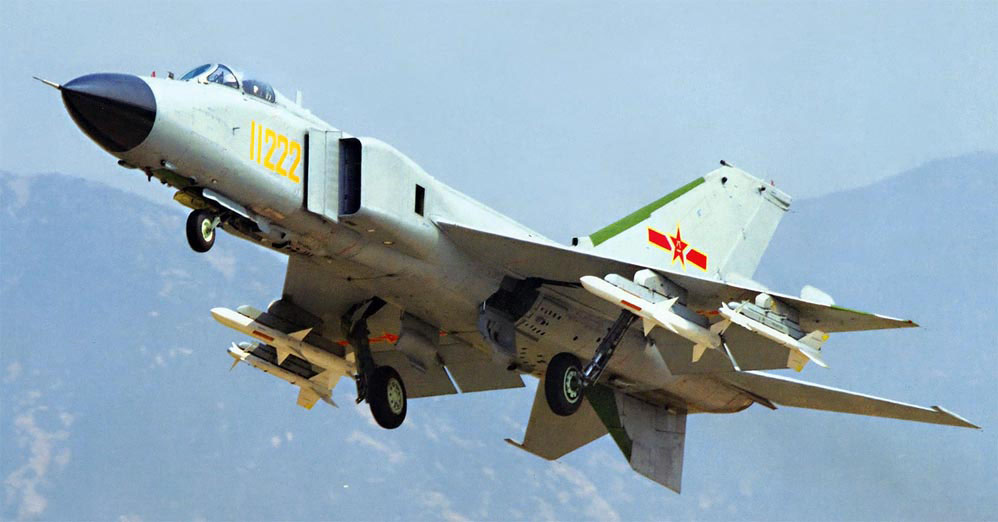
Chengdu J-10 (Israeli Lavi and F-16)
In the 1980s, the U.S. partnered with Israel to develop a new combat aircraft based on the General Dynamics F-16. But as costs rose, the U.S. pulled out of the deal, leaving Israel’s “Lavi” fighter unfinished. Israel sold the Lavi’s development plans to China, granting them unprecedented access to technologies first developed for the F-16. The J-10 shared more than a striking visual resemblance with the F-16.
The Chengdu J-10, also known as “Vigorous Dragon”, is a single-engine, lightweight multirole fighter aircraft capable of all-weather operation, configured with a delta wing and canard design. It has fly-by-wire controls. The program was authorized by Deng Xiaoping in the 1980s. Work started several years later in January 1988, as a response to the Mikoyan MiG 29 and Sukhoi Su-27 flying in USSR and the American F-15 and F-16. Chief designer was the same as for J-7III. The aircraft was initially designed as a specialized fighter, but later became a multirole aircraft. In 2006, the Russian Siberian Aeronautical Research Institute (SibNIA) confirmed its participation in the J-10 program. SibNIA engineers also believed the J-10 was “more or less a version” of the IAI Lavi, incorporating “a melting pot of foreign technology and acquired design methods”. The J-10 was officially unveiled in January 2007. The first prototype “J-10 01” was reportedly rolled out in November 1997 and first flown on 23 March 1998. The aircraft series production in 2002, and was began was formally introduced in PLAAF service in 2006. Over 450 have been built till date. The technology sourced through Israel allowed China to advance significantly over the 1960s era fighters they were fielding at the time. This would not be the last Chinese fighter to incorporate elements of the F-16, but it’s the most direct.



J-10C is an upgraded version of J-10B, and is equipped with an indigenous Active electronically scanned array (AESA) fire-control radar and is equipped with the infrared-homing PL-10 and new long range PL-15 air-to-air missile (AAM). FC-20, is the single seat multi-role fighter jet, the export version of the J-10. J-10B TVC Demonstrator is a prototype fighter based on J-10B that is equipped with WS-10B thrust-vectoring control engine.

Shenyang J-11/16 (Russian Sukhoi Su-27)
In the 1970s, Shenyang aircraft factory proposed a new designed light fighter powered by the British rolls-Royce Spey 512 engine, with better maneuverability than MiG 19, then in service and better climb rate than the MiG-21. Known as the J-11, the project was abandoned due to difficulties in obtaining the engines. The J-11 was finally born in 1998 as a Chinese version of the Soviet-designed Sukhoi Su-27 SK air superiority fighter after China secured a $US2.5 billion production agreement which licensed China to build 200 Su-27SK aircraft using Russian-supplied kits. Under the terms of the agreement, these aircraft would be outfitted with Russian avionics, radars and engines. However, in 2004, Russian media reported that Shenyang co-production of the basic J-11 was halted after around 100 examples were built. The PLAAF later revealed a mock-up of an upgraded multi-role version of the J-11 in mid-2002. The indigenous J-11B variant incorporated various Chinese material modifications and upgrades to the airframe with improved manufacturing methods in addition to the inclusion of domestic Chinese technologies such as radar, avionics suites and weaponry, including anti-ship and PL-12 air-to-air missiles, presumably for the role of a maritime strike aircraft. The alleged reason for the sudden stop in the production line of the J-11 was because it could no longer satisfy the PLAAF’s requirements, due to elements such as the obsolete avionics and radar, which were structured for aerial missions.

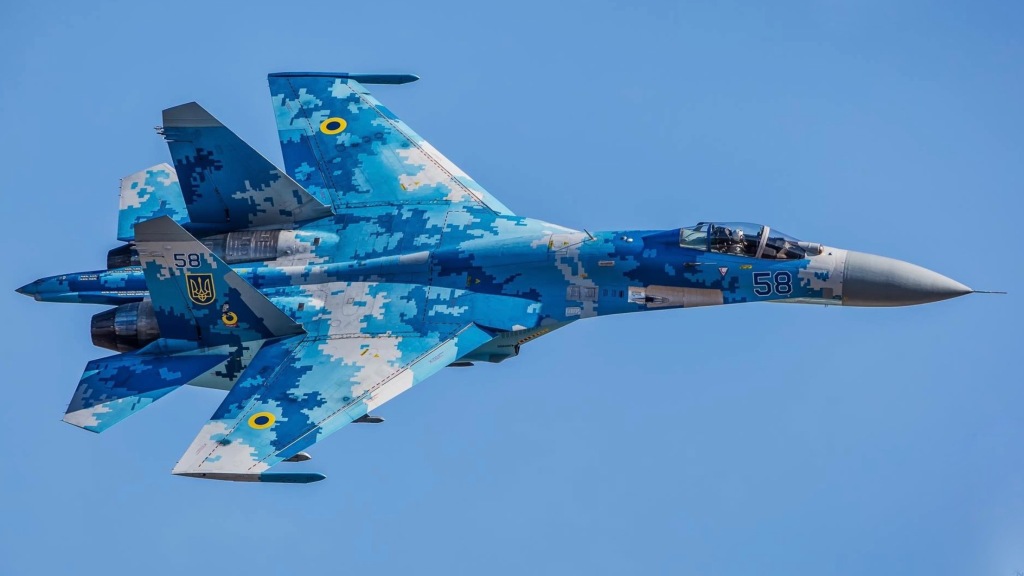
In 2002, Russian media reported that Chinese were looking into replacing Russian-made J-11/Su-27SK components with domestic, Chinese-made parts. Specifically, to replace the Russian-made NIIP N001 radar with a Chinese-made fire control radar based on the Type 147X/KLJ-X family, the AL-31F engine with WS-10A, and Russian R-77 AAM’s with Chinese-made PL-9 and PL-12 AAM’s. One J-11 was photographed with an AL-31F and a WS-10A engine installed for testing in 2002. However, it was not until 2007 when the Chinese government finally revealed information on the domestic J-11: the J-11 used to test WS-10 was designated as J-11WS, and it was when state television station CCTV 7 aired J-11B footages in mid-2007 when the existence of J-11 with domestic components was finally confirmed officially.
At the Zhuhai 2002 air show, a photo was released allegedly depicting a J-11 modified for flight testing of a single WS-10 turbofan. Andrei Chang, a military specialist on China reported that one J-11A was outfitted with the indigenously produced WS-10A turbofan engine, J-11B also uses WS-10A. However, Russian media reports also indicated that China still intends to upgrade the current J-11 fleet’s engines with either Saturn-Lyulka or Salyut power-plants. Engines under consideration include the Saturn AL-31-117S (a development of the Lyulka AL-31F planned for the Indian Su-30 MKI).
Serial manufacturing of the WS-10 and integration with the J-11, proved to be more difficult than expected. As a result, even though several related prototypes had been tested and at least one regiment converted to the Taihang powered J-11B version in 2007, these aircraft were later grounded for an extended period due to a poor operational reliability. A report in the “Washington Times” suggested that the Chinese engines lasted 30 hours before they needed servicing, compared to 400 hours for the Russian versions. Defects were traced back to the engine manufacturer, employing sub-standard manufacturing and quality control procedures. Several subsequent batches temporarily reverted to the original, Russian AL-31F turbofans. The engines manufacturing problems had finally been solved by the end of 2009 and the WS-10A had reportedly proved mature enough to power the Block 02 aircraft.
The J-11/J-11B’s legitimacy remains unproven, despite a wealth of information coming to light since 2007. In the course of a press conference at the 2009 Farnborough air show, Alexander Formin, Deputy Director of Russia’s Federal Service for Military-Technical Co-operation, reported that Russia had not so far tabled any questions to China with regard to “copying” military equipment. Fomin reported that Russia handed China the licenses to manufacture the aircraft and its components, including an agreement on the production of intellectual property rights. Details of intellectual property rights, however have not been disclosed, fuelling speculation about a “secret” contract or parts of the original contract. The license, at least officially, did not include an aircraft carrier version, the Sukhoi Su-33 nor any variant of it, such as the Shenyang J-15. At the MAKS 2009, Rosobororonexport’s General Manager Anatoli Isaykin was quoted saying: “Russia is going to investigate the J-11B, as a Chinese copy of the Su-27.” In 2010, Rosoboronexport announced via their official website that it was in talks with the Chinese side, regarding the ongoing production of weapons that Russia considers as un-licensed. In light of the ongoing investigations, Rosoboronexport expressed its concern over future sales of advanced Russian systems and components to China.
Unlike other fighters China employed at the time, the Su-27 brought advanced avionics systems and fly-by-wire technology that China was also able to incorporate into later platforms. In 2000, Russia sold China a number of advancements they’d made to their own Su-27 platform, and China’s subsequent effort to incorporate them alongside domestically developed technologies has since resulted in the J-16—a modified and updated Su-27.
Shenyang J-15 (Russian Sukhoi Su-33)
The Shenyang J-15 also known as “Flying Shark” is a 4th generation, twin-jet, carrier-based fighter of the People’s Liberation Army Navy (PLAN). It is developed from J-11B and reverse engineering after stripping a prototype of Su-33. An unfinished Su-33 prototype, the T-10K-3, was acquired from Ukraine in 2001 and is said to have been studied extensively, reverse engineered, with development on the J-15 beginning immediately afterward. While the J-15 appears to be structurally based on the prototype of Su-33, the indigenous fighter features Chinese technologies as well as avionics from the J-11B program. In February 2018, discussions about replacing the aircraft appeared in several Chinese media discussing that it belongs to the 4th or 4.5 generation fighters. Thus, the J-15 is viewed as an interim carrier-based fighter until a 5th generation successor enters service, one that may be based on the J-20 or J-31.
China’s J-15 serves as their primary carrier based aircraft, and if China had gotten their way, it would have been produced originally by simply purchasing the production line for the Su-33 (which is Russia’s carrier-capable version of the Su-27). When the Soviets refused to part with their Su-33 design secrets, China took the Ukraine, reverse engineering route. The result was a carrier-based fighter that shares the Su-33’s folding wing design and overall appearance coupled with a few Chinese improvements like incorporating more composite materials to reduce overall weight.

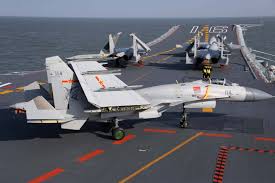
J-15 did its first flight on 31 August, 2009, and was introduced in PLAN service in 2013. Around 50 have been built till date. The J-15 was originally a single-seat variant, J-15S was two-seat variant that first flew in 2012. The latest J-15D has EW pods and other electronic equipment installed and the IRST sensor has been removed. It is under operational testing since late 2018. The J-15 is severely hindered by its launch apparatus. China’s dated Liaoning carrier’s inferior catapult and ramp system to launch fighters severely limits the maximum operational weight of the J-15, reducing the total ordnance it can take into fight. New carriers under development promise to offer an electromagnetic catapult similar to those used on America’s new Ford class carriers, but the J-15 may not live to see service on such a ship.
CASC Caihong-4 (U.S. MQ-9 Reaper)
The CASC CH-4 is a dedicated Unmanned Combat Aerial Vehicle (UCAV) of Chinese origin. It is said to borrow heavily from the proven existing line of American MQ-9 Reaper UCAVs. Both are intended for the strike mission role through various precision-guided munitions and are designed to loiter over target areas for hours (the CH-4 sports a fourteen hour mission endurance window). Externally the two look alike right down to the outward-cranked tail fins, straight main-plane wings and fixed tricycle undercarriage. Chinese industry obviously has no shame in copying foreign designs to save time and achieve capability. The CH-4 is one of a long line of UAV products. “Rainbow” series also include the CH-1, CH-2 and CH-3. The CH-4 represented the largest. The “CH-4A” is primarily for reconnaissance and the “CH-4B” for the armed reconnaissance and attack role.
At the “chin” position is a blister housing the sensor kit with both Infra-Red (IR) and daytime (with zoom) capabilities as well as a laser rangefinder. The armament includes Anti-Tank Guided Missiles (ATGMs) as well as precision-guided drop bombs – up to 770lb of ordnance can be displayed across four to six total under-wing hard-points. CH-4 are operated by Egypt, Iraq and Saudi Arabia. The CH-5 represents a slightly more advanced version of the CH-4, first-flying in August of 2015. This product features improved performance specifications including greater endurance and altitude.
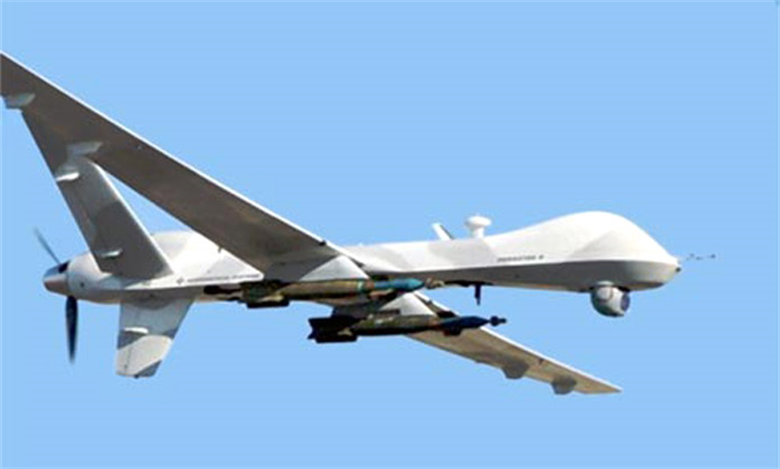

Further ahead, the CH-7 is a stealthy flying wing UCAV similar to the X-47B. It was planned to make its maiden flight in 2019 and commence production in 2022. The CH-10 is a tilt-rotor UAV. CH-91 is a fixed-wing UAV in twin boom layout with inverted v-tail and a pair of skids as landing gear. It’s also called as BZK-008. CH-92 is a fixed-wing UAV in conventional layout with V-tail and tricycle landing gear. CH-802 is a fixed wing micro air vehicle (MAV). CH-803 is a fixed-wing UAV with a cylindrical fuselage and canards, but without tail plane. CH-901 is a fixed-wing UCAV in conventional layout with cylindrical fuselage and high wing configuration.
FC-1 Xiaolong / JF 17 “Thunder” (Soviet MiG-21 and Ameriacn F-16)
China’s J-7 was essentially a MiG 21 platform. After access to F-16 design specs through Israel’s “Lavi” program, China mixed the two technologies to create an aircraft that some contend is greater than the sum of its parts. Elements of both aircraft can be seen in the FC-1 (JF-17 in Pakistan), with the F-16’s nose and tail joined by a distinctly MiG-21 wing design. The latest variant of the JF-17 now include AESA radar, air-to-air refueling capabilities, greater use of composite materials, fly-by-wire technology and latest Chinese AAMs.
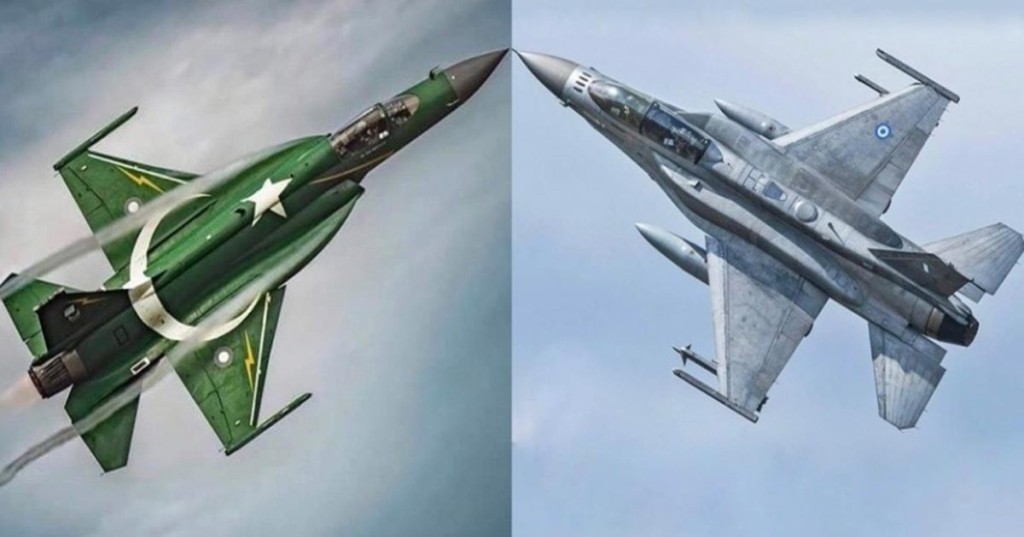
Chengdu J-20 (U.S. F-22 Raptor)
The J-20 is designed as an air superiority fighter with precision strike capability. The J-20 made its maiden flight on 11 January 2011, and was officially revealed at the 2016 Chinese air show. The aircraft was introduced into service in March 2017, and began its combat training phase in September 2017. The first J-20 combat unit was formed in February 2018. The J-20 is the world’s third operational fifth-generation stealth fighter aircraft after the F-22 and F-35.
The J-20, is China’s first fifth generation fighter. Plans for the Lockheed Martin F-22 design were stolen by a Chinese national named Su Bin, who was sentenced to 46 months in federal prison for his crime. Aside from the obvious addition of forward canards on the J-20, the two aircraft look nearly identical. However China lacks extensive background in stealth technology, it’s widely believed that the J-20’s stealthy design is limited by their inferior radar-absorbant coating, production materials, and even those tell-tale canards. American defense experts have said that China’s J-20 will have a far larger radar signature than the F-22. The U.S. discontinued the F-22 program in 2011 with around 180 built. China, on the other hand, will continue to produce J-20s in large quantities for years to come.
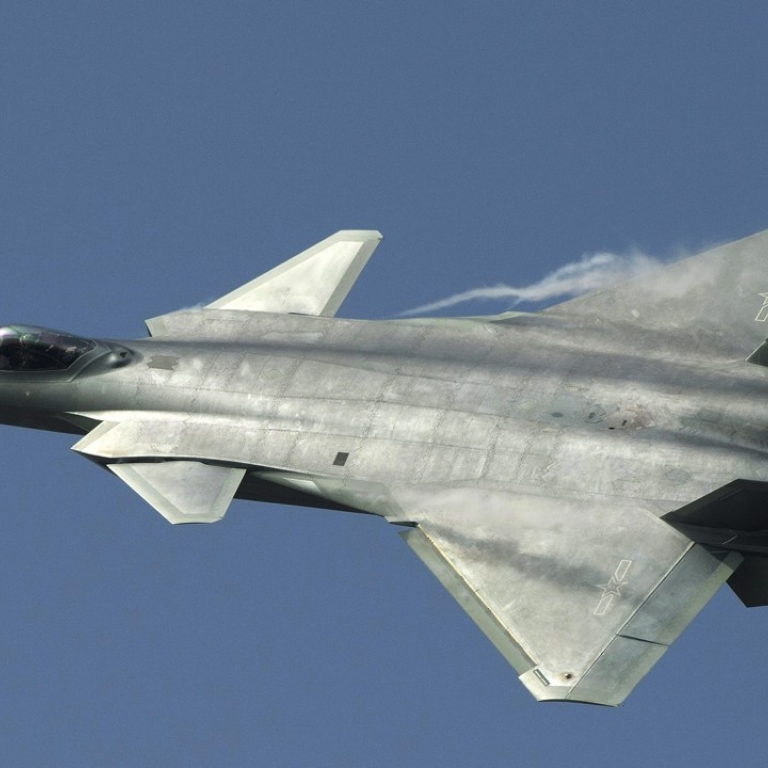

Shenyang J-31 (U.S. F-35 Lightning II)
The Shenyang FC-31, is a twin-engine, mid-size, Chinese fifth-generation fighter currently under development. A photo of a model labeled F-60 was posted on the Internet in September 2011. Pictures of a possibly fully assembled aircraft parking on an airfield emerged on 15 or 16 September 2012. The F-60 is reported to be the export version, where the J-31 would be the domestic Chinese version of the same fighter. On 31 October 2012, prototype No. 31001 conducted the maiden flight. China became the second nation to have two stealth fighter designs in field-testing at the same time. The aircraft has continued a limited test program. From mixed reports from China, it is unclear whether the J-31 will be inducted as a carrier-based naval fighter, or only intended for foreign customers. Officials from AVIC say that the aircraft was intended for export as a competitor to the F-35. An improved prototype, with modifications to the vertical stabilizers, wings, and airframe, an electro-optical targeting system, a larger payload, improvements in stealth, and upgraded electronics, made its maiden flight in December 2016. In November 2018, media reports indicated that the FC-31 program had received government funding and is being sought after by both the PLANAF and PLAAF.
Like the F-22, Lockheed Martin’s F-35 Joint Strike Fighter was also reportedly compromised by Su Bin, leading to China’s J-31 program. This jet, still under development, possesses a greater operational range and larger payload capacity than the F-35 it was based on. There is an expectation that the J-31 will become China’s primary carrier-based fighter once it reaches full production, replacing the PLAN’s troubled J-15 once it enters service. Like the J-20 program, the J-31 is limited by China’s inexperience with stealth aircraft. Externally, the J-31 seems to borrow heavily from both the F-35 and F-22 programs.

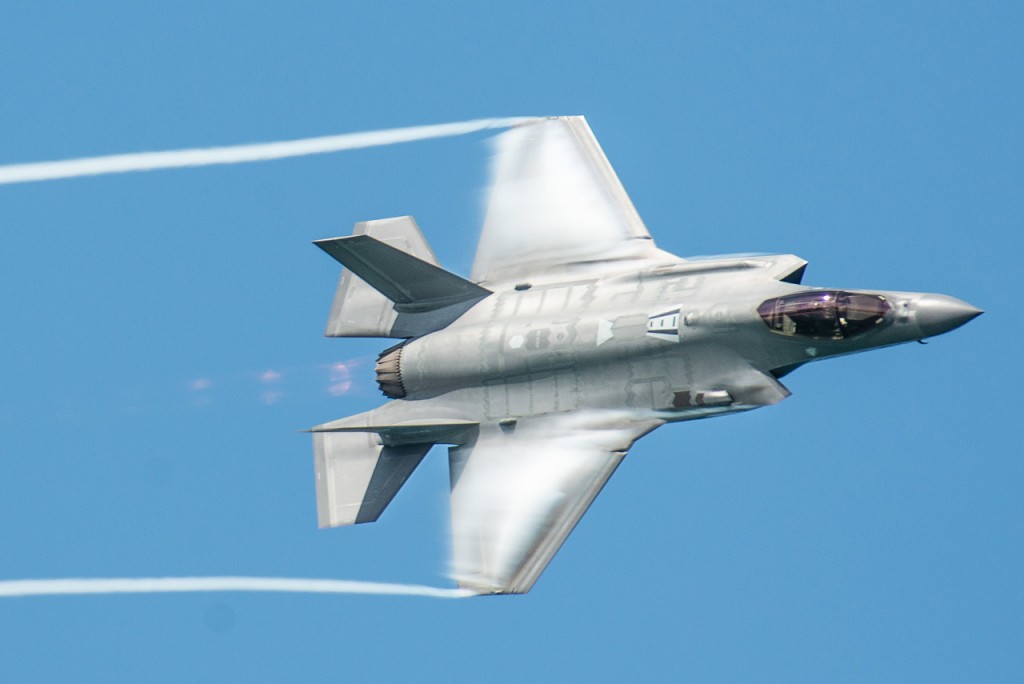
Xian Y 20 (Boeing C-17)
The Xi’an Y-20 is a large military transport aircraft project was officially launched in 2006. The aircraft is more commonly known by its nickname Chubby Girl because its wide fuselage in comparison to other Chinese aircraft previously developed. Y-20 started ground testing in December 2012, including runway taxi tests. The aircraft made its maiden flight lasting one hour on January 26, 2013. In June 2016, the first two Xian Y-20 aircraft were delivered to the PLLAF. Twenty Y 20s have been built till date. On 13 February 2020, the Y-20 was part of a fleet used to deliver supplies and personnel to Wuhan. Similarities with C 17 in basic design are very visible.

Harbin Z 20 (Sikorsky UH 60)
The Harbin Z-20 is a medium-lift utility helicopter which first flew on 23 December 2013. This 10 ton class helicopter can operate at locations up to 4,000 m (13,000 ft) altitude, as well as from the Chinese aircraft carrier Liaoning. It is thought to be comparable to the US made Sikorsky UH 60 Black Hawk helicopter, the civilian Sikorsky S-70 C-2 variant of which has been used by the PLA since 1984. The design copying is clearly visible.

Master at Stealing Technology
Col Vinayak Bhat wrote an analyses in “The Print” about China’s stealing US technology. On 27 March 1999, one of the US Air Force’s stealth F-117 bombers was shot down in the NATO raid of Yugoslavia during Operation Noble Anvil. The wreckage was reportedly sent to China to study the stealth shape and materials. On 7 May 1999, the USAF bombed the Chinese embassy in Belgrade amid rumours that Washington has learnt about their intentions to steal the F-117A technology. Soon after the Kosovo war, an exact replica of F-117A was observed at one of PLAAF’s radar development establishments. A similar replica of another USAF aircraft F-22 was observed in China at the Neifu Pucheng airport. After the US raid in Abbottabad that killed Osama bin Laden, it is believed that Pakistan provided access to China to study the remains of the stealth Black Hawk chopper that brought in the US Navy Seals and crashed during landing. The existence of the super-secret stealth helicopter was not known until the raid.
To Summarize
Sun Tzu, the Chinese general, military strategist, writer and philosopher wrote around 500 B.C. “Be extremely subtle, even to the point of formlessness. Be extremely mysterious, even to the point of soundlessness. Thereby you can be the director of the opponent’s fate.” He also wrote “Of all those in the army close to the commander none is more intimate than the secret agent; of all rewards none more liberal than those given to secret agents; of all matters none is more confidential than those relating to secret operations.” Clearly Chinese have mastered the art of stealing aircraft designs. They have used Chinese Diaspora, financial inducements and cyber attacks. Many Soviet aircraft and systems designers for induced to move to China with drawings when Soviet Union was collapsing in 1991. China has thrown intellectual property rights to the winds, and the worst has been on aircraft design stealing.
Image Credit: funnyjunk.com

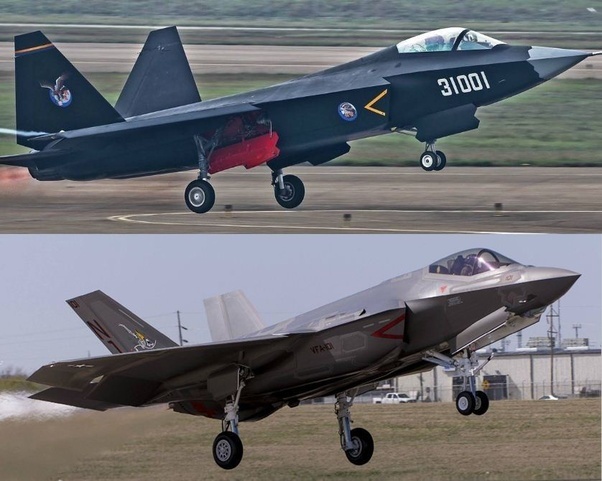
A great job done here. Details of how and what the Chinese achieved over the years clearly listed. This must have given them a lot of experience in developing future aircraft.
LikeLiked by 1 person
Yes Sir. They stole, the copied, they reverse engineered and learnt. Now they are pumping money into research and becoming independent.
LikeLiked by 2 people
Sir,
Thank you for very informative article. I have few questions to understand rise of Chinese industry
Why couldn’t other countries copy designs? Were they ethical or they could not copy?
Are Chines military aircraft capable or not? I believe US DOD gives an annual report on Chinese domestic defence industry, which has been reporting on progress in Chinese defence industry for the last two decades?
How is aeronautical research in China?
How was China able to develop several new technologies including Hypersonic vehicles, swarm UAVs etc.
Why should India do develop domestic industry. to match China?
LikeLike
Happy that you enjoyed reading.
Copying? Ethics. Then let the world not have intellectual property rights. Copy and print books. Someone else does research for years, produces a medicine, you just copy it, simple? It is not just copying but stealing through cyber attacks and other means.
Yes Chinese military is becoming more and more capable. Because of rising economy, they could pump in more funds into defence and also in R&D. Credit to them for that.
Some of their aircraft and systems are over hyped. Stealth for one. Yes their missiles are shaping well. Still only one aircraft carrier.
Aeronautical research is getting the highest priority. In the long run they will get ahead.
They spend $25 billion on defence R&D, India spends less than $6 billion. So the new technologies.
Most importantly centralised control and decision making. India has a decomcracy which at times functions in erratic ways.
Undoubtedly India must develop indigenous defence industry
LikeLike
Sir, due to China copying technology from their Russian military purchases and on top of that making unauthorised copies of these which are then tom-tommed by China as indigenous Chinese products and technology, do they have any weakness when it comes to using them against India?
LikeLike
Copying and Capability are two different things. China is still weak in Aircraft engines, AESA radars, EW and stealth. But they are pumping a lot of money into these and will catch up.
LikeLike
Sir, thank you for your reply. I appreciate that.
LikeLike
Sir, India is now getting Rafales from France. The Rafale is unlike twin-engine fighter jets which have twin-tails. Does the Rafale having a single tail give it any advantage?
LikeLike
Single fin or twin fins is not an issue. What counts is the overall capability of the aircraft
LikeLike
Sir, is it the Rafale or the Tejas which is visible in your blog’s header photo?
LikeLike
Tejas
LikeLike
Sir, thank you for your reply. I appreciate that. At first it looked like the Rafale.
LikeLike
Sir, thank you for your reply. I appreciate that. But, how do we counter the threat from Qatar which like India operates the Rafales and won’t hesitate to tell Pakistan about it’s workings? Qatar is a terrorist state, it’s own Gulf Arab neighbours called it out for the same. It’s emir owns the Al Jazeera English TV news channel which supports terrorism by refusing to call terrorists terrorists and calls terrorists sent into India by Pakistan as rebels. Apart from this, Egypt also operates Rafales. If Egypt like Qatar also told Pakistan about Rafales workings, then, what should India do?
LikeLike
Great. Why can’t we do some reverse engineering
LikeLiked by 1 person
We are Indians and we regard ethics.
LikeLike
Sir, in numerical terms if India buys as many military hardwares like China has, will we be able to defeat them? This assessment of the IAF needing 42 squadrons is pretty old, I guess. When was this assessment first fone and how many years ago sir?
LikeLike
I meant “done”, not “fone”, sir. Error is regretted.
LikeLike
Sir, what do you think about the Su-57 Felon with DIRCM operated by Russia https://theaviationgeekclub.com/did-you-know-the-su-57-felon-is-the-only-fighter-jet-equipped-with-dircm/amp/? Now that Union Defence Minister Rajnath Singh is going to Russia for Victory Day parade in Moscow, will our FGFA with Russia [of which the Su-57 is a variant] be revived? Do you see India buying more from Russia apart from the soon-to-be sanctioned 12 Sukhoi Su-30 MKIs and 29 MiG-29s?
LikeLike
Earlier there were many issues with technology and work and cost sharing between the two countries. I am not sure if these have been resolved. That will remain the starting point for any discussions I guess
LikeLike
Sir, thank you for your reply. I appreciate it. I’d appreciate your replies to other questions of mine on this blog post.
LikeLike
Lmao clearly a article to stroke Indian and Western ego. What next are you going to say? Planes have wings and it must be a stolen design? What ridiculous.
LikeLike
Enjoy reading just the facts
LikeLike
J-20 = Mig 1.44.
LikeLike
Well. Let us see
LikeLike
Russia has copied American jets for half a century, China reverse engendered the russian planes that they copied from the US in the first place.
LikeLike
You are right. Similarities are visible
LikeLike
A comprehensive account. My compliments. Should remind us in India that we don’t really have the luxury of being “purists” against an adversary who knows no rules.
LikeLike
Thanks. Well said Kaypius
LikeLike